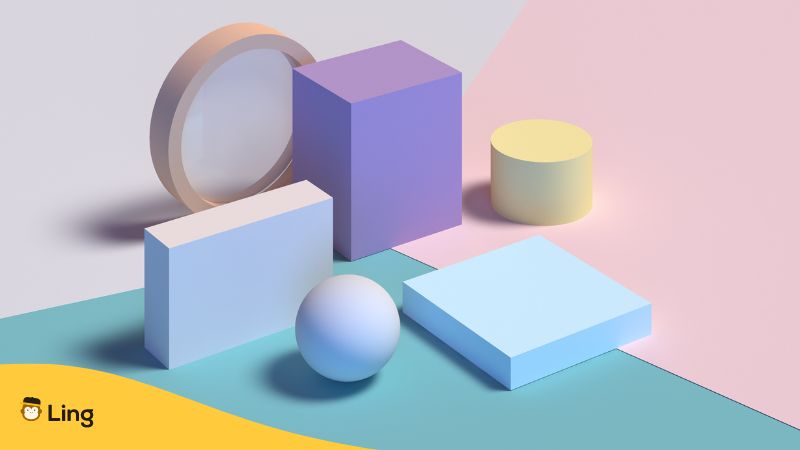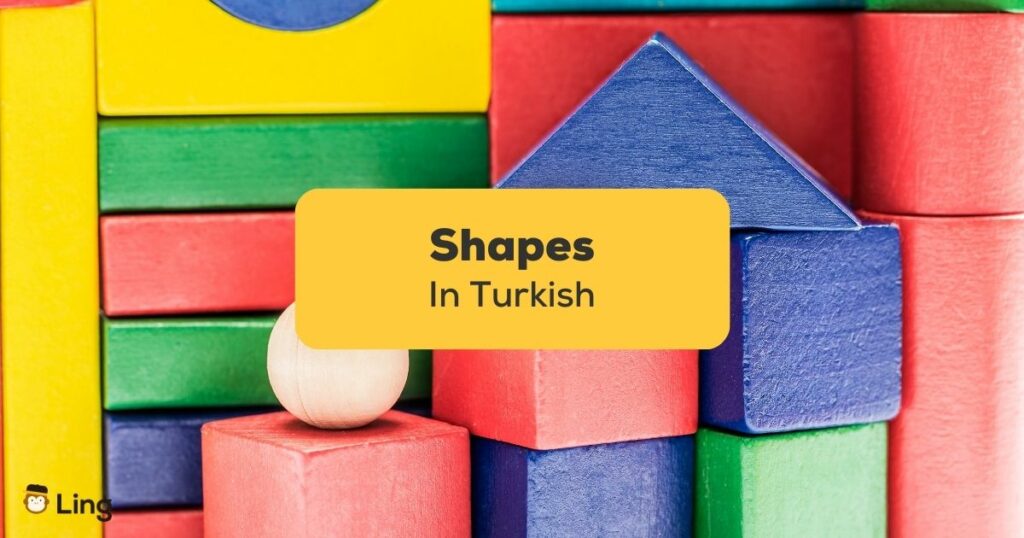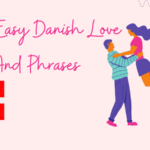Ever thought about how shapes aren’t just for your math homework? I know I have! In my opinion, şekiller, or shapes in Turkish, are the real deal, way beyond those boring geometri dersleri. This set of words is like this living, breathing thing that totally influences art, talk, and even the places people live in. In fact, it’s like the simple karalama (doodles) and kıvrımlar (swirls) you draw in your notebook come to life, connecting everything from history and traditions to the very essence of who people are.
And since you landed here, I pretty much know that you’re also looking to amp up your vocab related to this topic. And, my friend, you’re in luck! In this post, we’ll discuss the Turkish world of shapes! Trust me, it’s gonna be wild, and it’s way more than just a touristy ride. Let’s begin!
Common Shapes In Turkish
Exploring words for common shapes in Turkish culture is an absolute must-know, offering an eye-opening insight into a world where art, language, and architecture are intertwined. Not only is it a simple subject, but it can be used in literally everything! Just imagine how hard it would be to talk to the shopkeeper if you can’t express that you’re looking for an item with a specific shape, right? Now that’s one way of ruining the whole shopping experience!
Our advice? Try to memorize at least the basics (clue: the ones you see below!).
| English | Turkish |
|---|---|
| Circle | Çember |
| Triangle | Üçgen |
| Square | Kare |
| Rectangle | Dikdörtgen |
| Pentagon | Beşgen |
| Hexagon | Altıgen |
| Octagon | Sekizgen |
| Ellipse | Elips |
| Star | Yıldız |
| Crescent | Hilal |

Advanced Vocabulary For Shapes In Turkish
Feeling like a pro with the basic shapes in Turkish? Now, how about we turn it up a notch? You see, in the fascinating world of Turkish culture, shapes aren’t just shapes. They’re a blend of art, architecture, and even literature, each with its own complex and unique expression.
So if you’re looking to add some pizzazz to your convo, try to use the words I rounded up below!
| English | Turkish |
|---|---|
| Parallelogram | Paralelkenar |
| Rhombus | Eşkenar Dörtgen |
| Trapezoid | Yamuk |
| Spherical | Küresel |
| Cubic | Kübik |
| Cylindrical | Silindirik |
| Prism | Prizma |
| Pyramidal | Piramidal |
| Fractal | Fraktal |
| Hyperbolic Geometry | Hiperbolik Geometri |
| Tessellation | Döşeme |
| Polyhedron | Çok Yüzlü |

Basic Sentence Structures For Using Shapes In Turkish
Turkish is an agglutinative language, meaning that words are often built by attaching various suffixes to root words. Sounds tricky? I know! But don’t worry, we’ll break it down into simple parts. Here’s how you can use shape-related vocabulary in basic sentences:
- Describing Shapes (Adjective + Noun):
- English: “The painting has a square shape.”
- Turkish: “Tabloda kare şekli var.”
- Asking about Shapes (Question Word + Verb + Object):
- English: “What shape is the building?”
- Turkish: “Bina hangi şekilde?”
- Talking about Geometry (Subject + Verb + Object):
- English: “This prism has a cubic structure.”
- Turkish: “Bu prizma kübik bir yapıya sahip.”
- Expressing Preferences in Shapes (Subject + Verb + Object):
- English: “I love spherical designs.”
- Turkish: “Küresel tasarımları seviyorum.”
- Discussing Art and Architecture (Subject + Verb + Adjective):
- English: “The architecture is asymmetrical.”
- Turkish: “Mimari asimetrik.”
Symbolism Of Shapes In Turkish Belief
In Turkish belief, shapes aren’t merely geometric forms; they are imbued with profound symbolism, often intertwined with history, religion, folklore, and societal values. Let’s explore some of the most prominent symbolisms:
- Circle (Çember): The circle represents unity, eternity, and perfection in Turkish belief. It often appears in architectural designs and traditional art as a symbol of the infinite nature of God.
- Triangle (Üçgen): Often associated with strength and stability, triangles symbolize the Holy Trinity in Christian communities in Turkey. In other contexts, it might represent elements like earth, water, and air.
- Star (Yıldız): The star shape, particularly the five-pointed star, has strong national symbolism and appears on the Turkish flag. It signifies the unity and cohesion of the Turkish people.
- Crescent (Hilal): Another symbol on the Turkish flag, the crescent, is deeply associated with Islam and symbolizes growth, enlightenment, and the spiritual journey.
- Hexagon and Octagon (Altıgen & Sekizgen): These shapes frequently appear in Islamic art and architecture, representing a blend of spirituality and science. They are often used to create intricate patterns that symbolize the complexity and unity of creation.
- Eye Shape: In Turkish culture, the eye shape, especially the blue eye known as “Nazar Boncuğu,” is believed to ward off the evil eye. It’s a common amulet in Turkey, symbolizing protection and good luck.
- Geometric Tessellation (Döşeme): Tessellation in Islamic art symbolizes the order and harmony of the universe. The intricate patterns signify the boundless creativity and wisdom of the Creator.
As we learned here, the symbolisms of these shapes in Turkish belief go beyond mere visual appeal; they encapsulate philosophical thoughts, religious principles, and cultural expressions. As a traveler, understanding these symbolisms allows us to see shapes as mirrors reflecting the multifaceted and rich tapestry of Turkish culture. Isn’t it astonishing how something as simple as a shape can carry such profound meaning and evoke such powerful emotions?
Learn Turkish With Ling
And there we have it! If you’re feeling the pull of curiosity and want to unravel more about Turkish language and culture, the Ling app is your best bet. Imagine having a vibrant learning space right in your pocket, filled with interactive lessons, engaging activities, and cultural insights. Cool, right?
With the Ling app, you can learn Turkish at your own pace, whether you’re a newbie or a language pro. And the best part? You’ll have fun doing it! Shapes, phrases, traditions – it’s all there, waiting for you to explore.
So why wait? Download it now from the App Store or Play Store to get started!

































































